BoatNews.com

Test / Astus 22.5 : A 22 feet trimaran, habitable in cabin as well as on deck
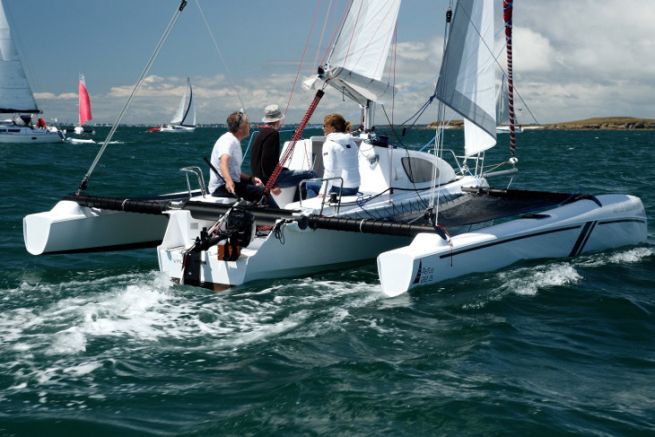
Part 2 of our test of the Astus 22.5. Review of the boat's layout, cabin and deck layout. Anchor locker, galley, storage... The details of a boat designed for coastal camping.
A comfortable and safe cockpit
It is often the place where you spend the most time on a boat. The cockpit is therefore an essential element. The Astus 22.5's cockpit offers a safe space for 4 people. The 3.75 meter long trampolines complete the cockpit for additional crew members. A generous aft balcony (optional) can serve as a backrest for the helmsman . Some may want to add a small cushion.
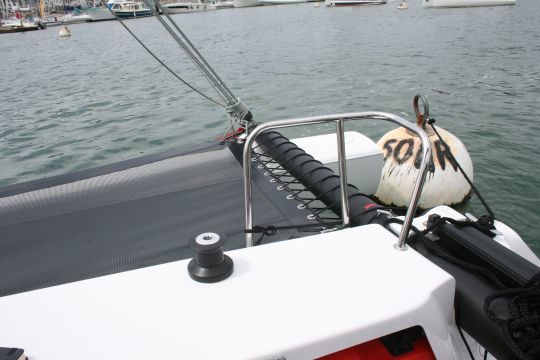
On the storage side, two open lockers under the helmsman's seat hold the outboard motor's power supply on the port side and the maneuvers and mooring lines on the starboard side.
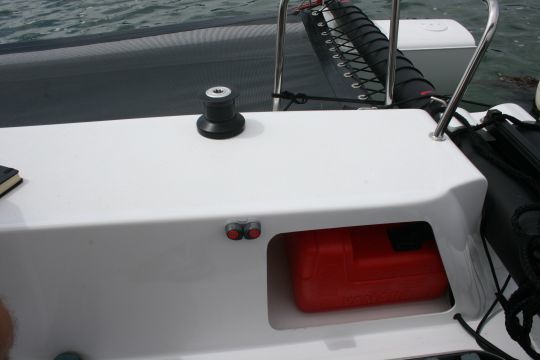
A generous deck hatch allows for storage of equipment under the cockpit floor.
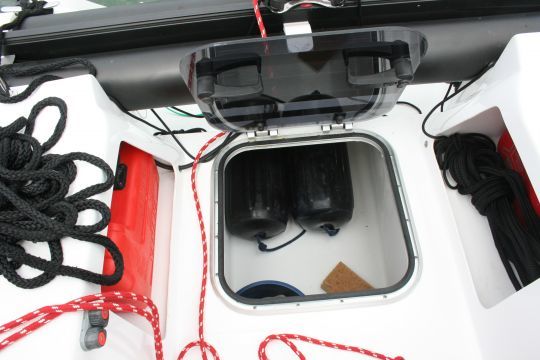
Except for the gennaker, all the running rigging is sent back to the cockpit. A piano on the roof receives halyards, reefing lines and jib sheets. Winches on the cockpit coaming allow the adjustment of the gennaker.
Front deck and floats
The foredeck remains small due to the size of the boat , but sufficient for the little maneuvering required on site. One person can stand up easily. He or she can retract the bowsprit , cast off or raise the anchor , in safety. The ingenious anchor locker at the front of the roof allows both centering of the weights and easy access.
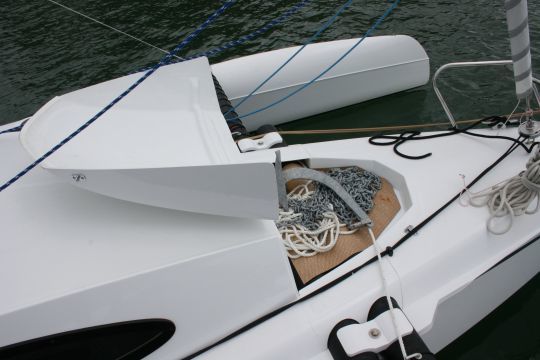
As evidence of the cruising program, the geometry of the float deck has been slightly modified compared to the Astus 20.5 to accommodate a deck hatch. It is thus possible to store equipment in the central waterproof compartment of each float.
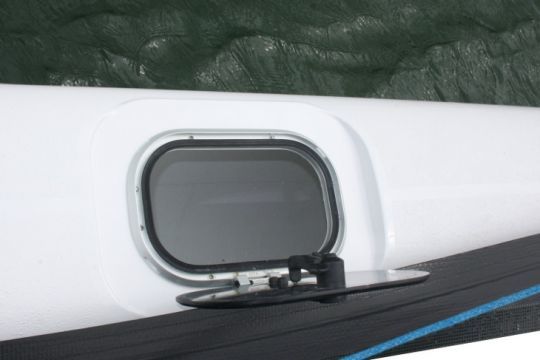
A modular cabin
The descent into the cabin of the Astus 22.5 is done by a wooden step on the head of the daggerboard well, slightly off center on the port side. The trick, with little visible consequences in terms of edge-to-edge difference, frees up access to the volume under the cockpit, allowing the storage of a small 2-seater tender. Depending on the choice of equipment, the batteries can find their place under the companionway.
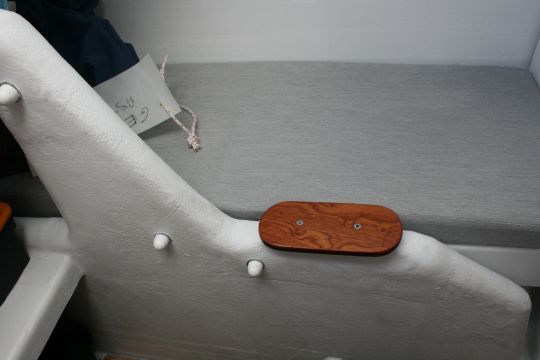
The cabin, generously lit by the side window of the roof and the deck hatch in front of the mast foot, offers 4 berths of 2 meters long. The 2 coffin berths at the rear are 46 cm wide, while the Breton bed at the front is 1.42 m wide at the head and 80 cm at the foot. A chemical toilet is located under the front bunk.
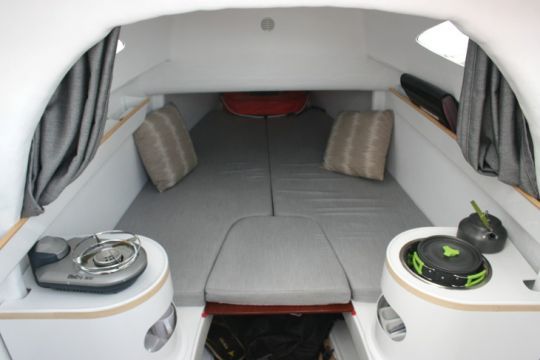
The kitchen furniture is modular and removable. Several options are proposed. The model we tested had a stove on the port side and a small sink on the starboard side, and storage space under the work surface. By removing the module, it is possible to extend the coffin berths.
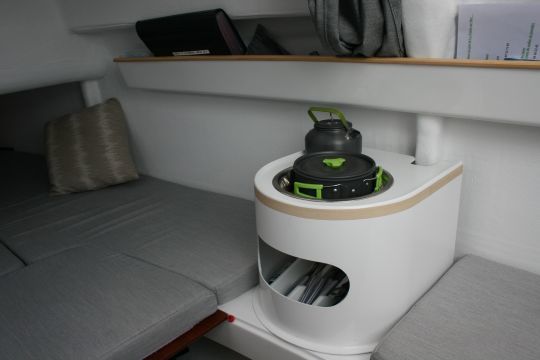
If the layout will depend on the options chosen for the desired use, the Astus 22.5 responds with simple solutions to the needs of the yachtsman looking for short cruises and coastal raids.
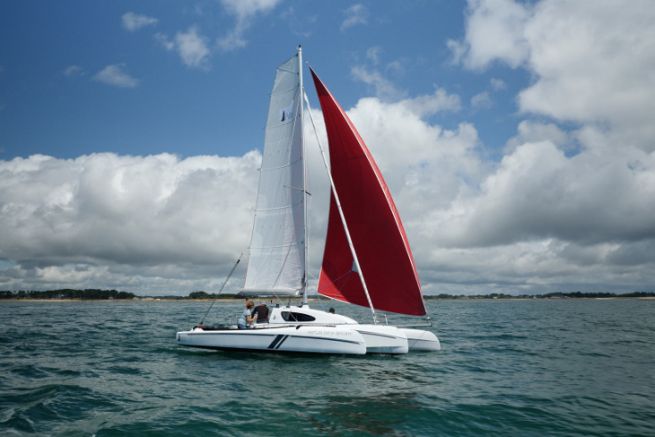
- 0 No item in your cart
- The magazine
Current issue
- All the issues
- My magazines
- Technical specifications
- Multihull of the Year
- Classified Ads
- Destinations
- Online store
- All the magazines
- Subscriptions
- Accessories

2022 Sailing Special Buyer's Guide
Thanks to their habitable volume and deck space far superior to those of an equivalent-length monohull, multihulls in this category offer most of the attributes of serious yachts. Beyond a length of 60 feet, here we are at the gates of Superyachting... Exceptional machines that nevertheless require one or more professionals on board.
Create a notification for Buyer's guide
We will keep you posted on new articles on this subject.

Published 26/11/2021
By Emmanuel van Deth
Published: jan. / feb. 2022

Choose the option that suits you best!
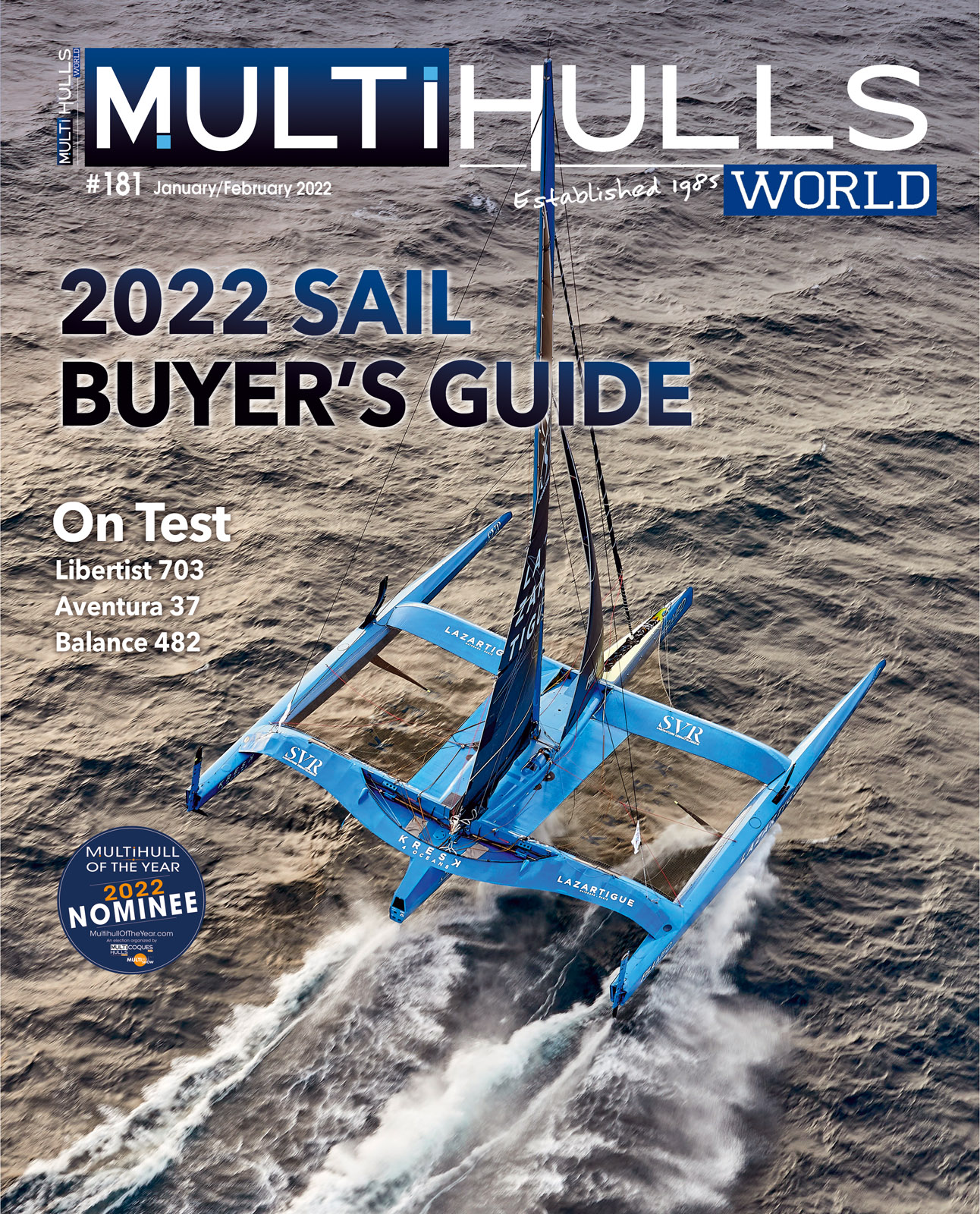
Issue #: 181
Published: January / February 2022
- Price per issue - digital : 7.90€ Digital magazine
- Price per issue - print : 8.90€ Print magazine
- Access to Multihulls World digital archives Digital archives
MC60 - Style and performance
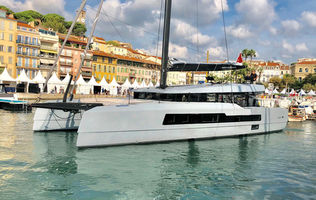
Since first being presented at the 2018 Cannes Yachting Festival, the MC60 has seen three units built. Not a bad commercial performance for such an exclusive catamaran. The nacelle is designed ‘open space’ in line with current trends, but as for the rest, the MC60 is nothing like the others: a very specific topside form, high-tech mast support strut to distribute the loads, tempered glass panes, sliding side windows, no forward beam, sail-trimming flybridge set aft... it’s impossible to remain indifferent! In the hulls, the cabins offer volume and comfort without compromising performance thanks to a generous sail plan and superb centerboards.
Builder: McConaghy Boats Architect: Ker Yacht Design Length: 60’1” (18.30 m) Beam: 28’2” (8.58 m) Draft: 4’7”/12’4” (1.40/3.75 m) Upwind sail area: 2,260 sq ft (210 m²) Cabins: 3/4 Water: 148 US gal (560 l) Fuel: 148 US gal (560 l) Motors: 2 x 57 HP Price: US$ 2,148,000 ex-tax
www.mcconaghyboats.com
SUNREEF 60 - Welcome to the world of luxury
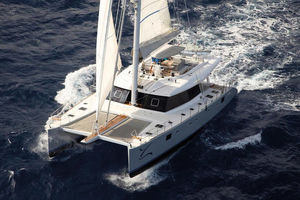
The Sunreef 60 is undoubtedly reminiscent of her big sistership, the 80 - this model of the same generation is in a way the best-seller of the range. The exterior lines bear close resemblance, as does the flybridge, the vertical side windows and the coachroof-bimini shape. The interior (2,420 sq ft/ 225 m²), the saloon and the cockpit merge into the hydraulic platform, which extends them into a terrace. The cabinetwork is remarkable. The in-house design team has considerable experience in listening to customers: each unit is different. High rigid bulwarks, and forward interior helm station with panoramic view also characterize this model.
Builder: Sunreef Yachts Length: 60’ (18.30 m) Beam: 33’6” (10.20 m) Draft: 6’3” (1.90 m) Mainsail: 1,022 sq ft (95 m²) Genoa: 915 sq ft (85 m²) Spinnaker: 3,230 sq ft (300 m²) Cabins: 4/6 Water: 211 US gal (800 l) Fuel: 264/462 US gal (1,000/1,750 l) Motors: 2 x 75/110 HP
www.sunreef-yachts.com
MOON YACHT 60 - Loads of volume - made to measure
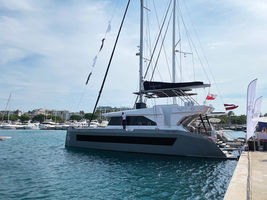
While this imposing 60-foot catamaran discovered at the Cannes Yachting Festival may lack finesse in the design of its superstructure, it does offer exceptional overall volume for its size. The same goes for the sunbathing areas, which are absolutely gigantic. In this category, only the Sunreef 60 is able to compete with this new model unveiled at the Cannes show. This isn’t a totally insignificant comparison, because Moon Yachts also happen to be built in Gdańsk, like Sunreef... The interior layout can be planned according to the Owner’s wishes. An 80-foot sailing version and powercats have also been announced by the manufacturer.
Builder: Moon Yacht Length: 60’1” (18.32 m) Beam: 31’8” (9.64 m) Draft: 5’7” (1.70 m) Mainsail: 1,140 sq ft (106 m²) Genoa: 689 sq ft (64 m²) Displacement: 54,250 lbs (24.6 t) Water: 2 x 163 US gal (2 x 620 l) Fuel: 395 US gal (1,500 l) Motors: 2 x 57 HP CE certification: A
www.moonyacht.com
Subscribe to Multihulls World and get exclusive benefits.
Tags :
- 2022 Sailing Buyers Guide
Most-read articles in the same category
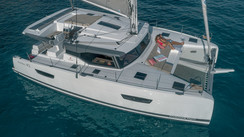
Bahamas, White Cay

Gautier Kauffmann

Tenders with two hulls...

Transport under sail
What readers think.
Post a comment
No comments to show.
MW #197 - Oct / Nov 2024
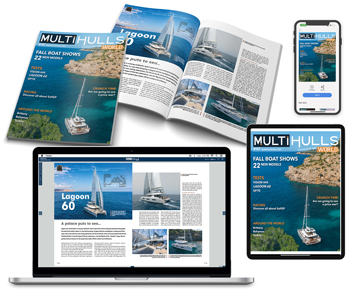
2024 Sail Buyer's Guide

2024 Multipower Buyer's Guide
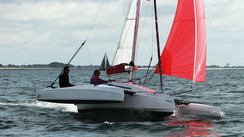
2023 Sail Buyer's Guide
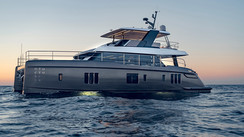
2023 Power Buyer’s Guide
Subscribe now.
The latest news from €3 / month
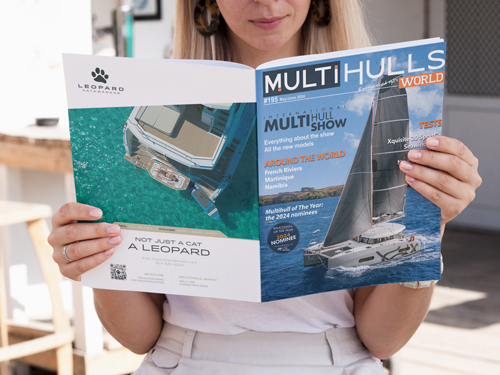
Video of the month
Our latest YouTube hit!

The Multihull of the Year
The 2024 results

Classified ads

Woods Flica 35
Bosgraaf 15m trimaran, minicat 310.

Nautitech 48 0pen Available
Vous avez ajouté " " à vos favoris., vous avez supprimé " " de vos favoris., in order to add this article to your favorites, please sign in..

- ENQUIRE NOW
Specifications
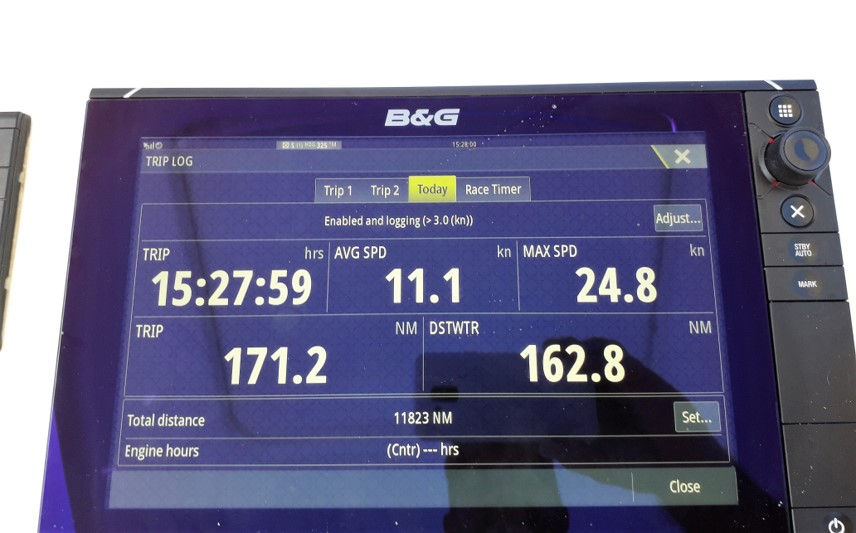
General Details
- Length: 18.1m (59.3 ft)
- Beam: 11.7m (38.4 ft)
- Draft: 1.0m (2.5 ft)
- Average light displacement (subject to final options): : 9,700 kgs (21,385 lbs)
- Displacement (max load): 12,000kg (26,456 lb)
- Headroom (average): 2.1m (6 ft 11 inches)
- Mast height above water: 25.3m (83 ft)
- Storage volume of floats (at greatest dimension): (l) 4.5m x (w) 1.3m x (h) 1.5m
- Storage volume under cockpit (at greatest dim.): (L) 2.2m x (W) 3.3m x (H) 1.4m
Further information:
- For detailed specifications, click onto Rapido 60 Specifications (30 Nov. 2021)
- Click to download Rapido 60 General Arrangement .
Sailing La Vagabonde post a video of the launch of La Vagabonde III (Rapido 60 #04) on 2 November 2023. See video below.
- Mainsail: 125m² (1,345 ft²)
- Solent: 71m² (764 ft²)
- Reacher: 130m² (1,399 ft²)
- Asymmetric Spin: 225m² (2,422 ft²)
- Stay sail: 25m² (269 ft²)
General Information
“I sailed Rapido Hull #01 on the Mediterranean Sea the other day and we were doing 14 knots upwind while cooking in the spacious kitchen!" Ferdinand van West (former F18 World Champion working with designers, Morrelli & Melvin ). ( Click here for original article in Catamaran Racing.)
Billed as the World’s Ultimate Ocean Cruising Trimaran , the Rapido 60 really is the Queen of the Oceans . It offers speed, safety, performance – and luxury.
The inspiration behind the Rapido 60 comes from Paul Koch (co founder of Rapido Trimarans), arguably, the man who has built more production trimarans than anyone else on the planet.
The design is by world renowned naval architects, Morelli & Melvin Design and Engineering who use some of the most sophisticated technology in the world. Triac Composites is our exclusive builder.
While the foam sandwich and carbon construction is lightweight which gives the boat its speed, it also provides an extremely strong and rigid structure that has been designed to withstand the might of the oceans.
An additional benefit of the foam sandwich construction is the high degree of insulation, protecting the Rapido when the sun beats down.
Morelli & Melvin enjoy a very strong international reputation. Their designs even include entries for the America’s Cup .
https://www.facebook.com/raceweek/videos/1868118026600225/UzpfSTM1ODI2NDQ5MTAwMzkyMjoxMDU2MjY4MzMxMjAzNTMx/
[Video caption: Take a tour onboard Rapido 60, Romanza with owners, Dougall and Jaz Love, during Hamilton Island Race Week.]
Morrelli & Melvin’s computer modelling said that the Rapido 60 was very strong. And so we tested it.
We bolted the centre hull of the Rapido to the factory floor in HCMC. We then brought in two mobile cranes – each took a diagonal corner of the two outer hulls. With one diagonal corner each, the two cranes began to lift while the trimaran’s centre hull remained bolted to the floor, causing it to twist. One tonne of lifting pressure… Two tonnes… Three tonnes…
As the trimaran twisted it began to creak and groan. But the sensitive electronic equipment we had measuring every move and twist remained unphased. Everything was within design parameters.
Seven tonnes… Eight tonnes… Nine tonnes…
The pressure was eased and the Rapido spring back into its original condition – totally unaffected by the enormous twisting pressure that had been placed upon it.
The computer modelling had accurately predicted the incredible structural strength of the composites used in the Rapido. The Rapido is built to take on the oceans.
Rapido is, simply, the Queen of the Oceans.
Incredible storage capacity
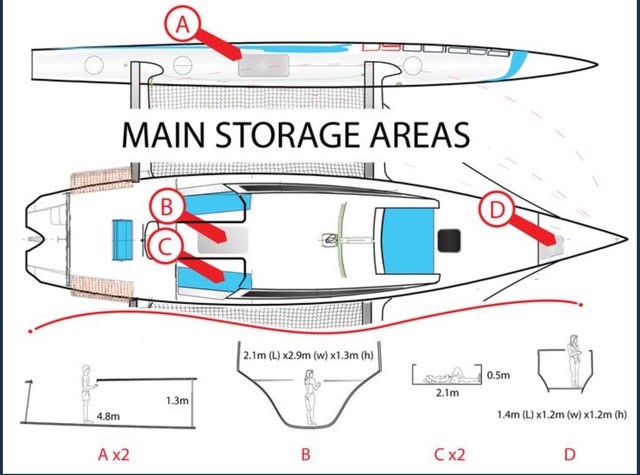
The Rapido 60 has amazing, dedicated storage capacity. Floats (4.8m x 1.3m). Beneath the cockpit seats (2.1m x 0.5m). Beneath the cockpit floor (2.1m x 2.9m x 1.3m). Forward of forward cabin (1.4m x 1.2m x 1.2m).
Other videos
[Video above: Rapido 60, Romanza, races effortlessly at 24 knots during the opening day of Airlie Beach Race Week (Whitsunday Islands, Queensland, Australia) in August 2018.]
[Video above: Owners of Rapido 60, Romanza, take the organisers of Hamilton Island Race Week on a walk thru tour.]
[Video above: Owner of Rapido 60, Ineffable, Steve Bourne is interviewed about his boat for the 39th St Maarten Heineken Regatta.]
[Video above; Rapido 60, Romanza wins the PIC Coastal Classic in New Zealand in November 2020. And it wasn’t all hard sailing out there over the 21 hours.]
- For more videos, visit the Rapido Trimarans’ You Tube Channel .
FAST AND POWERFUL
Trimarans are safe, powerful and fast as demonstrated by the fact that they consistently win races and hold the solo speed record for circumnavigating the world.
Safety at sea is the No. 1 priority and this thinking is reflected throughout the design and construction of the Rapido.
The Rapido 60 has some truly amazing living spaces which provide more open, private and intimate areas than monohulls or catamarans.
stable and comfortable
Trimarans are comfortable on all points of sail.
The combination of safety, performance and comfort put the Rapido in a league of its own. The enormous trampoline nets add fun and excitement as you watch the blue water rush underneath you – or as you lounge on the nets while gently floating over a reef. You will be instantly hooked..
look inside the
Rapido 60 in action.
See more Rapido Trimarans videos (You Tube)
View all Rapido 60 photos
60 in the media
Below is a list of articles which have appeared in various publications regarding Rapido Trimarans.
- Sailboat Review, Rapido 40, A sailor’s dream boat , by Mark Pillsbury, Cruising World magazine, 6 May 2024
- Rapido host much anticipated launch of first Rapido 53XS , Sails magazine, 1 May 2024
- Rapido 53XS – a peak speed of 24 knots during initial sea trials , by Emmanuel van Deth, Multihulls World, 19 April 2024
- Rapido 53XS, the new 16m globetrotter of a trimaran , by Aldo Fumagalli, Vela magazine, 24 January 2024
- First look – Rapido 53XS, a 20 knot cruiser , by Toby Hodges, Yachting World, 29 December 2023
- Video. Sailing Bliss: Unveiling the Rapido 40 Trimaran – GIDDY UP!!! , by Naval Gazing at Camp David, December 2023
- Video. The Rapido 53XS: Tour, review and ideas , by Naval Gazing at Camp David, December 2023
- Rapido 53XS Review , by Yachting World, 9 November 2023
- Video. Der Kat-Jäger: Carbon-Trimaran Rapido 40 aus Vietnam (“The cat hunter: carbon trimaran Rapido 40 from Vietnam”) by Yacht TV, 12 October 2023
- Cruising World announces Rapido 40 as Boat of the Year 2024 nominee , Cruising World, 26 September 2023
- Rapido 40 carbon trimaran from Vietnam – the test , by Michael Good, German Yacht Magazine, 21 September 2023
- C-foils on a fast cruising trimaran? This looks rapid!, Rapido 40 tour, Yachting World magazine video by Toby Hodges, 8 September 2023
- Rapido 40: The Alternative Trimaran , by François-Xavier de Crécy with photos by Ludovic Fruchaud, LE MONDE DU MULTICOQUE #24 by Voile Magazine. July, 2024.
- The Rapido 40 is a 20 knot cruising tri , George Day, Cruising Compass, 24 May, 2023
- Boat Review of Rapido 40, Zuzana Prochazka, Sail Magazine, 4 May 2023
- Rapido 40: ultra fast cruising in complete safety on three hulls , Maxime Leriche , SailboatNews.com, 25 April 2023
- Boat anomaly: Rapido 40 Trimaran , No Frills Sailing, 19 April 2023
- Rapido 40 – Fast, foldable and worry free!, Multihulls World magazine, No. 189, May-July 2023
- Shipyard Focus: Rapido Trimarans , by Kevin Green, Multihulls World, August / September 2022.
- Rapido, changing the game , by Zuzana Prochazka, Sail Magazine, 23 March, 2022
- Rapido 40: A livable sailboat for cruising on 3 hulls , Briag Merlet, Sailboat News, 23 February 2022.
- Rapido, changing the game , (takes a detailed look at the cutting edge design and technology of Morrelli & Melvin) by Zuzana Prochazka, Multihull Sailor, December 2021
- Boat Review: Rapido 50 , Kevin Green, Boating New Zealand, November 2021
- Harnessing Speed , by Kevin Green, Boating New Zealand, November 2021
- Rapido 60 Trimaran Boat Review: A Bold Gamechanger For Performance Bluewater Cruising , by Zuzana Prochazka, Yacht World, 23 September, 2021.
- Harnessing the wind , by Kevin Green, Multihulls World, September / October 2021 issue, 6 page spread on Rapido Trimarans.
- Sailing La Vagabonde choose Rapido 60 to sail world’s oceans , video announcement by SLV to their 1.59 million subscribers, You Tube, 8 June 2021
- The Ultimate Racer-Cruiser: Clients on Romanza are turning heads on the racetrack when they’re not cruising at high speed , North Sails, 19 April, 2021
- Making Short-handed Short Work – Onboard Rapido 60 , Anna Merchant, Sail-World, 11 February 2021
- Rapido 50 News from the Shipyards , Multihulls World, 2 February 2021
- Buyers’ Guide 2021, Rapido 50 , Multihulls World, 18 December 2020
- “New breed” Rapido 40 & 50 , Yachting World magazine, November 2020
- Cruising Helmsman reviews Rapido 60 , October 2020
- Romanza takes top spot in Yates Cup , SEA Yachting magazine, September 2020
- Rapido Trimarans relocates production arm into Vietnam , SEA Yachting magazine, Nov/Dec 2019.
- Rapido Trimarans, On the March, Seahorse Magazine , October 2019.
- (French) Rapido 40, un trimaran repliable de 12 m , Bateaux.com, 29 August 2019.
- Rapido 60 – The most exciting production multihull in the world? (or click here for selection of quotes), Multihulls Magazine, Summer (July) 2019.
- Rapido , Cruising Yacht Club of South Australia, June 2019 (pp23-24)
- Ineffable’s Steve Bourne: I’m a nutter for sailing , Daily Herald, 26 February 2019.
- Rapido 60′ the fastest production multihull in the world? , International Multihulls World, December 2017
- RAPIDO 60’ : Le multicoque de série habitable le plus rapide du monde? , Multihulls World, 23 November 2017
- Finding Mrs Right , Boating New Zealand, August 2016
- Blue Water Cruising Trimaran , Australian Multihulls World, August 2016
- Rapido 60 , Cruising World, 25 August, 2016
- Rapido 60 , by Emma Bamford, Sailing Today.

- Plans & Kits
- Plans by type
Tryst 10 Trimaran Plans Download
Write a review.

- Create New Wish List
Description
Additional information.
About Woods Downloadable Plans
Click HERE to download Free Study Plans
The 10ft Tryst trimaran is a variation of the Duo dinghy
The main hull is a sailing Duo and it is fitted with two Vee shaped outriggers that bolt onto the Duo wings. The wings are then lashed to the main hull gunwales, as they are on Duo, see below. The outriggers add masses of stability for little extra weight, especially as all the panels for the outriggers are made from one sheet of 3 or 4mm ply. So the whole boat is very light and cheap to build, basically made from just three sheets of plywood

The Tryst outriggers are long, narrow and deep. That is because they are not "training wheels" but hulls in their own right. If they were too short and fat they would generate a lot of drag, even if they had the same buoyancy as the longer ones. The prototype was first sailed in August 2014 in Canada and has since sailed in the USA and Mexico and has travelled over 10,000 miles in the back of our pickup truck - which has a 6ft long bed. I have had a great time sailing it, very easy and fun and, despite the small mainsail, Tryst sails surprisingly well even in light winds. Tacks very easily, with absoulutely no hesitation.

As a keen dinghy sailor I try to keep both outriggers out of the water, but when I'm feeling lazy I let them do the work and just sit back and relax, welcoming the extra security of the buoyancy "out there doing it". One reason for making the outriggers a Vee shape is to reduce slamming and spray. Another reason is that, when heeled, the outriggers give grip to the water. this allows easy sailing on or off a shallow beach.
Tryst would be an extremely difficult boat to capsize. But, if it did, then it is small and light enough to pull up again without help. Simply stand on one outrigger, which will sink and the boat then rotates round the main hull.

When sailing is over for the day the complete Tryst, including rig and outriggers can fit inside a pickup or van with a 6ft bed, (assuming a nesting Duo is built) as shown above. We have a three piece mast, the outriggers fit in diagonally. In any event, once the three hulls are separated, it is easy to cartop - even singlehanded.
6 weeks after receiving the building plans a builder in the Philippines reported:
"Trific launched on Friday 13th in perfect weather conditions. At this location the sea is very shallow, 200+ meters out I attempted to use the dagger board & came to a full stop! No damage done.
Launching off the lee shore beach into the head wind without the daggerboard proved suprisingly easy, I'm guessing my 100kg weight immersed the floats sufficiently to provide adequate resistance to leeway!
Richard Woods notes: In the video of my second Tryst sail you can see me coming into a shallow beach to windward without the daggerboard. By heeling the boat to lee the deep V outrigger digs in enough to prevent excessive leeway (it is still more than a daggerboard though )

The little boat moved surprisingly quickly through the water, despite its heavy crew, and was extremely stable. The 63 sq ft balanced lug sail (by Hydes) seemed well suited to the boat. The loose foot sail was easy to adjust with the outhaul, downhaul & 'snotter' to give, to my eyes, a perfect shape. I seemed to be able to point to around 45deg. A super little boat, I'm well pleased."
Related Products

Zeta 14ft Trimaran Plans Download

Slingshot 19 Trimaran Plans

Slingshot 16 Trimaran Plans
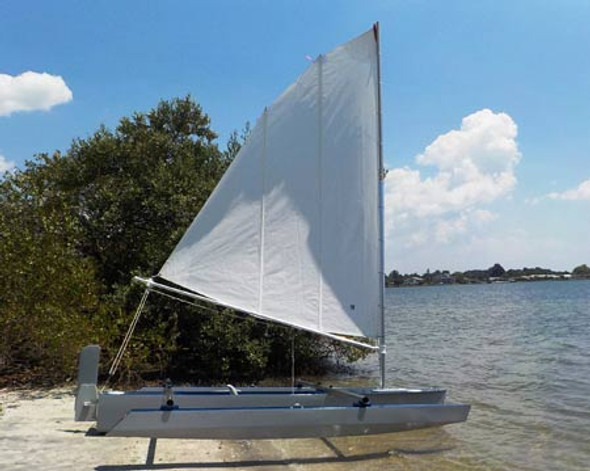
Slingshot 16 Tandem Trimaran Plans

| to see this rotator. | ||||||||
| Ed Horstman designs started in 1960 with the TRI-STAR 40. TRI-STAR 40 was the first Trimaran to race in the Multihull Transpack race to Hawaii in 1966; taking second place. TORTUGA TOO, a TRI-STAR 39 similar to the design pictured above was the first Trimaran (Sept 1979) to sail from east to west around Cape Horn, experiencing 100 mph winds. Crewed by Husband and Wife who previously build a TRI-STAR 35 and sailed it to Africa and decided to build the first and larger TRI-STAR 39.You will find builder pictures of the 38-42-43MC “Family” of Tri’s in the gallery, showing TRI-STAR'S sculptured hull lines, spaces interiors, and spaces workable decks, comfortable doghouse. Typical features found on all TRI-STARS. Designs that have plans that are drawn and layed out for the first time builder. Designs from 14' to 80' that are being build and sailed around the world by the same first time builders. Ed Horstman has drawn plans so they are easy to read by the first time builder. Plans cover all construction steps and include Full Hull Patterns along with my book Trimaran and Catamaran Construction. TRI-STAR hull building methods maybe either, Double Diagonal Plywood (DDP) or Foam Fiberglass Sandwich Construction (FFGC). Both building methods are covered fully in the plans and Tri-Cat construction book. For those planning to build using FFGC I include my FFGC book with plans. There are TRI-STAR designs sailing today that were build in late 60,s and 70,s using both methods of construction, some have been resold many times and keep on impressing there new owners with their sailing performance and, as always, their accommodations. Trimarans and Catamarans are true "sailing enjoyment," take for example the TRI-STAR 42 pictured above with its bow resting on the sandy beach and all experiencing an enjoyable day on the beach. Trimarans and Catamarans are true sailing pleasure that starts with a fast and comfortable non-heeling sail. Trimarans and Catamarans are fun and easy to sail and faster than their heeling counterpart. You will find that when sailing at a very minimum angle of heel, you will enjoy your sail even more, be it a weekend sail or an extended cruise. Trimarans and Catamarans both have spacious accommodations you will enjoy; these are shown in the Interior Gallery section. Trimarans and Catamarans with their spacious decks and comfortable accommodations make sailing a joy and the lack of heeling make your sailing even more pleasurable as you are not rolling out of bed while sailing or at anchor. You truly will enjoy Trimaran and Catamaran sailing and it's easy to become accustomed to not having to hold onto your coffee mug when sailing.Ed Horstman has over 45 TRI-STAR Trimaran or Catamaran designs you too can build from a selection of Trimaran plans from 18ft. to 104ft. and Catamaran plans from 14ft to 55ft. For more information and details then on my web site see my Catalog and or Study Plans. "I am sure you will find a TRI-STAR design you will enjoy building and become one of the many satisfied TRI-STAR owners sailing the world over. Happy Sailing Ed Horstman." | ||||||||
July / August Issue No. 299 Preview Now
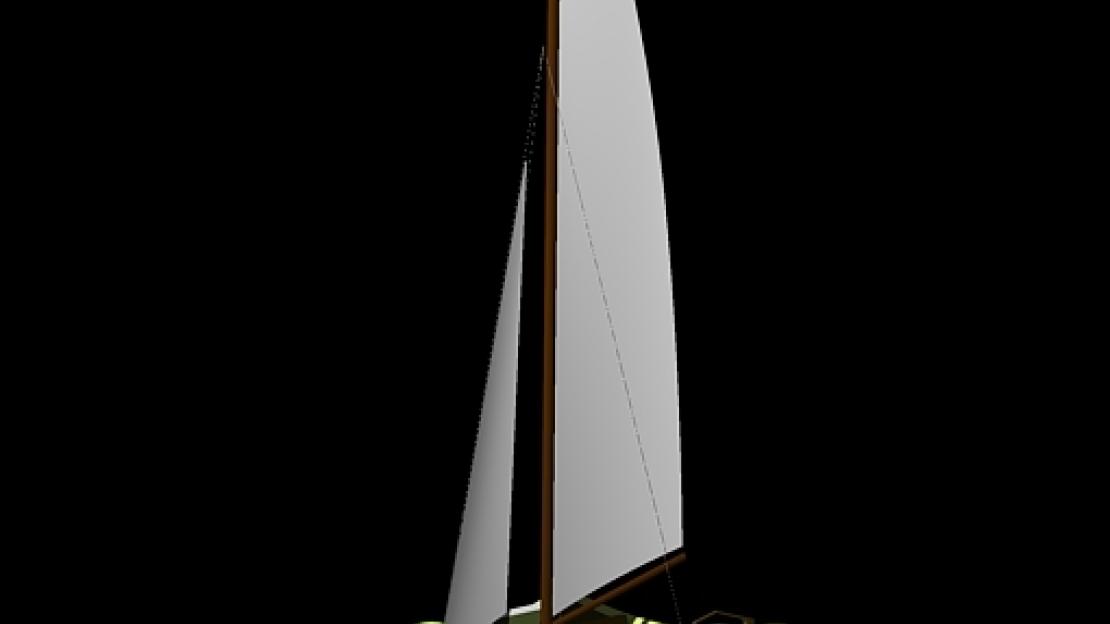
L20 Trimaran
A modern iteration of Philippine double outrigger canoe. Adapting to present-day construction method, the wooden facetted hull still has the silhouette of the Austronesian “Bangka”.
Design Specifications
https://samaloutrigger.wordpress.com/contact/
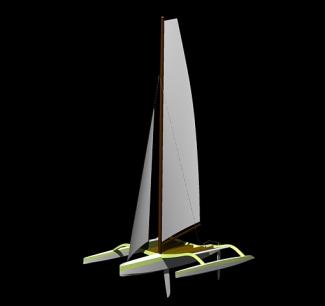
ACCESS TO EXPERIENCE
Subscribe today.
Publishing dynamic editorial content on boat design construction, and repair for more than 40 years.
1 YEAR SUBSCRIPTION (6 ISSUES)
Print $39.95, digital $28.00, print+digital $42.95, from plans & kits.
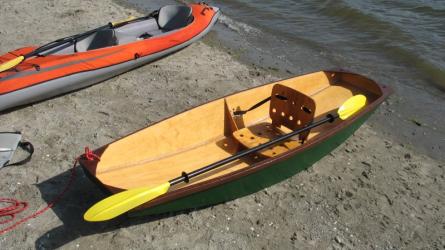
"Mickey Mouse" - 8'(2.40m) One Sheet Mini Punt

Pixie 14 sailing catamaran
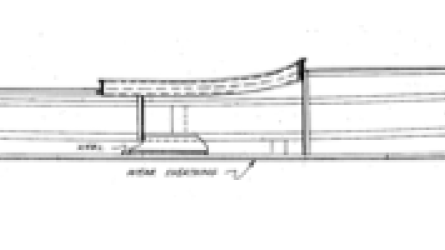
15' Alford Sea Kayak, Tursiops
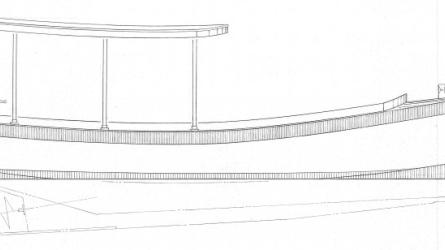
24 ft Launch - Fisherman
From the community.
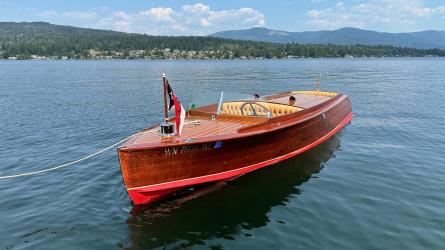
1929 Hacker Craft Runabout 18'
Jimmy Steele Peapod
Good Vintage Boat - Hull Number 66 - Completed In 1989.


1967 Crosby Striper #86
Short cabin version. Restored in 2020 new lower frames, knees, floors and cockpit.
Boats Plans and Kits
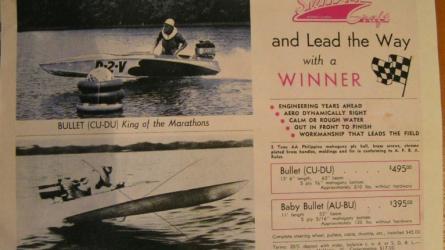
Switzer Bullet 136

Basic Ways of Using Plywood and Potential Effects on Performance
QUESTION: Can you please describe some basic ways of using plywood for the construction of a cost-effective multihull and explain how each shape might effect boat performance?
ANSWER: Although we will primarily consider a number of design options for using plywood , most of these will also lend themselves to any flat panel—and that could even include foam slabs with fiberglass skins, although this might not be recommended for the under-keel portion of the main hull where a denser core would generally be needed. (Sections C & E)
So let's look at six symmetrical options. Here's a sketch of each… with an indication of a ½‑round section offering the same volume for comparison, being as that's the shape with the least surface area and lowest skin friction. While the first 2 (A,B) are primarily potential designs for a narrow trimaran amas, the last 4 (C,D,E,F) could work within limits for either the main hull or ama, though I do not personally recommend shape D for the reasons given below. There's also no reason that the designs cannot be combined for a trimaran, with one section used for amas and another for the vaka (main hull).

Section A is what Lock Crowther used for the amas of his successful Buccaneer series. With a fairly deep central Vee, the hulls slice fairly easily through the water and also come down into wave tops pretty gently too. The relatively deep Vee will provide good directional stability and also help to reduce leeway or side-drift. However, the single chine will add some unavoidable form resistance, particular if used for a main hull and combined with much rocker. [It's important to note that with all these plywood shapes, I personally believe that higher rocker adds resistance. If the knuckle line can start low and stay straight , then the form resistance from a knuckle on a very narrow hull stays very low in most reasonable conditions] . As far as construction is concerned, the shape involves three underwater joints that each require careful preparation for a good fit, so that makes this a middle-of-the-road option as far as labor is concerned. Also, the lower sharp corner is vulnerable to damage and will need extra glass (or a kevlar strip or other sheathing) for protection.
Section B is one of the easiest to build, as there is only ONE underwater joint eg: two sheets of ply could be wired together, the interior simply filled with an epoxy slurry and the joint then glassed. However its narrow section means that it needs to be very deep to find the equivalent volume. Such a section has been used on some Wharram-like catamarans and because of its depth, it was considered not necessary to add additional foil surfaces to control leeway, so overall it was a cheap and easy solution if the hull draft was not going to be an obstacle. The section does carry a fairly high penalty as far as its wetted surface is concerned though and the deep sections, while providing enormous directional stability (tendency to go straight which is fine for distance cruising), would also be very resistant to turning. This would make this section a less attractive option for a boat to be used in narrow, restricted waters. Without additional foils, such a shape generally has poor leeway resistance too and such a design would need a high keel rocker to improve its turning ability and this puts significant limits to its speed. But when combined with an open deck (a la Wharram) this shape has at least proven to be seaworthy and seakindly.
Section C is another very easy section to build with only two very simple joints to make. Chine logs (wood battens fitted internally at the knuckle) can simply be glued to the side ply and then both planed off together to fit the closing bottom ply. This is the system used primarily by Bill Kristofferson for his early quick-to-build K-designs. See: smalltrimarans.com/blog/?p=723#more-723 . It is also used by Richard Woods for several of his catamaran designs, as well as for the main hull of his 2010 Strike day-tri's. [My own W17 trimaran also toots this shape to good effect and in this case, the bottom joint is made with an even simpler epoxy fillet, glassed over both sides - see the ABC System under Construction Methods].
While most of these simple shapes cannot give the ultimate lowest resistance for all speeds and often provide less floor space, the SECTION C design is rather the exception and has proven to work well compared to both simpler options as well as more sophisticated shapes. If the bottom is widened, this design can provide enough space for a main hull and with a little vee up forward, will not slam if kept deep and underwater at the bow and certainly works well for a simple-to-build trimaran main hull, if the following additional design pointers are respected.
Care needs to be taken to be sure the bottom surface is not too wide—particular in the forward half of each hull—in order to prevent slamming, but the section has less depth penalty than Section B. The flat of bottom will not only permit the boat to turn more easily but will also provide a good surface to sit on (either trailer or sandy beach), provided that either the bottom ply is thick enough or provided with sufficient internal stiffening. An extra layer of glass would be sensible for the flat bottom or even the luxury of some abrasive-resisting Kevlar. This design provides more effective buoyancy low down than most of the other simple sheet options and if the bow is kept low in the water, the chine is kept fairly straight and its resistance minimized as the water is now parted mostly sideways and mostly below the surface —a relatively easy effort for a long, narrow hull. The low-in-the-water bow will slow its turning, but for a trimaran, this should not be of major concern. For a catamaran however, the two keels will likely need a more 'compromising rocker' to maintain adequate manoeuvrability.
Section D is a wide version of Section B and this is the way that Wharram catamaran hulls developed in order to give more internal space. See: wharram.com
As mentioned under Section B these hulls generally have an easy motion, though the wider ones clearly have extra form or wave resistance, and that is easy to understand. As the wave moves up and down on the hull, wide Vee hulls also force the water horizontally aside and this effort creates more wave resistance than a hull with more vertical sides. (see later published articles on this) . As this shape also has more wetted surface than that of a semicircle or even a U or box shape, it is clear that such hulls will inevitably be slower. Additionally, hull sections with excessive Vee up forward, cause a rapid increase in buoyancy that throws the bow high in the air, only to fall again when the wave has passed. This starts a repeated pitching action that is noticeably less with the Section C that has more parallel sides. However, the vee'd hulls are easy to build and no doubt this is one factor behind the successful sales of Wharram designs worldwide. The fast widening waterline beam, also permits these hulls to take added weight better than most. [The other factor with Wharram catamaran designs is that they have an appealing link to their Polynesian past and still ingeniously incorporate numerous rope lashings to attach the rig, rudders to the hull and hulls to cross beams etc, so that all provide a flexibility to resist ocean wave forces. Wharram designs also set very low rigs and therefore have significant stability reserve compared to many 'more modern' faster designs that carry a higher risk of capsize unless their beam is increased and their slatted bridge decks allow fast drainage with potentially less wave damage].
There are limits to increased beam, as when a multihull is hit with an exceptionally vicious wind gust, if the sail is not immediately released to weather-cock, the boat will capsize in the direction of least stability. When the design beam is increased excessively, this direction then becomes diagonal or even fore & aft, resulting in a pitchpole, so a balance of Beam to Length is always necessary. [added 2022 ...check out this Q&A article on the subject of Beam choice .]
Section E is the first of two multi-chine options shown here. The use of two narrower strips of plywood for each bilge, brings the shape far closer to that of a round bilge hull and this lowers its frictional resistance through the water. It will not be the same as a round bilge though as it still has 2 knuckles per side that will cause some turbulence as they interact with the ever-changing water pressure due to passing waves. This can be aggravated if the chines take much of a banana shape in profile, as they so often do when trying to simulate a rounded hull. Construction is also made more complex and it probably takes 50% more time to build either of these last two hull forms, than it does say Section C or D. In fact, one may argue that building a multi-chine hull like this, takes about the same time as say a strip-cedar hull that can be totally round-bilge, with the only extra time being that to cut out, set-up and fair the male building mold. Total material cost will likely be higher for the latter though unless one can share the mold cost with other builders. Section E has a flat bottom, so there are 'just' a total of 4 knuckles to fit and fair. The flat-of-bottom can help to get the volume of buoyancy into the hull design and also be low down, and this shape will allow a boat to turn more easily than that of Section F that has a sharper keel on the centerline. The shape also still sits nicely on a trailer. However, the flat bottom will require to be mated with a good sized foil (center or dagger board), as leeway can be an issue otherwise. The note about bottom protection for Section C, equally applies here.
With five knuckles, section F has the most construction work and precision fitting, but the slight Vee at the bottom can help with directional stability and also provide slightly more resistance against leeway than Section E. But both these designs have some merit and one might be justified in selecting Section E for a boat doing a lot of short tacking in a restricted area, whereas the extra directional stability provided by Section F would make steering more relaxed for longer tacks. A wide version of the quasi 'U'-shaped Section C will sit better on its bottom, offer lower wave-making resistance at the waterline and have the least leeway, despite it's boxy-look in section. One thing about designs like Sections E & F with added chine complexity, is that other building methods now start to become competitive re time and cost. In particular, apart from the strip-cedar method already mentioned, one might consider hybrid designs that use the combination of a fiberglass solepiece for both a more ideal underwater shape and durability, combined with plywood topsides where straight panels do not significantly affect the resistance. In fact, these designs can be designed to look both fast and attractive. Three such designs that come to mind are the Cobra Catamarans (>30'), the L7 trimaran, and my more recent W22; see references below. (Even some car designs have used fairly straight knuckle lines in the past, with the Citröen DS19 and BMC Mariner being two interesting examples from the 60's that come to mind.)

Regardless of the hull shape, one needs to keep in mind that the construction of the hull (or hulls) for any sailboat are only a fraction of the total work—perhaps 1 ⁄ 3 –and in some cases (as for sections B,C,D), even less. This fraction will also depend on whether one is using an existing rig and mast and how much internal work is planned. But the main point is to consider any decision about compromising on hull design to save build time, in relation to the time for the overall project.
See also specific articles under Construction Methods - # 1, 2, 3, 4, 5, 10, 11 & 12 and Compound Curves .
See also: L7 and W22
"New articles, comments and references will be added periodically as new questions are answered and other info comes in relative to this subject, so you're invited to revisit and participate." —webmaster
"See the Copyright Information & Legal Disclaimer page for copyright info and use of ANY part of this text or article"
Log in or Sign up
You are using an out of date browser. It may not display this or other websites correctly. You should upgrade or use an alternative browser .
Looking for Bluewater Trimaran plans 40-50 feet
Discussion in ' Boat Design ' started by Schoolbus , Feb 17, 2019 .
Schoolbus Junior Member
There seems to be a real gap of trimaran plans out there in the 40- 50 foot range- I am only finding trailerable tris, or very old Piver type designs, or the 54 foot Chris White Hammerhead..... Anyone out there know of any bluewater 40-50 foot Trimaran plans? (Neel 45 is one of the few production ones, and it is more of a catamaran style.......) Sincerely, Schoolbus
Angélique aka Angel (only by name)
Schoolbus said: ↑ Anyone out there know of any bluewater 40-50 foot Trimaran plans? Click to expand...
In WoodenBoat Magazine #265 * ( Nov . /Dec . 2018 ) was a design concept for a LOA 39' 4" ( 12 m ) wind - solar - electric trimaran motorsailer by Laurie McGowan . * Table of Contents PDF ( the flickering in the above animation, below the bottom in center view, is the lines of the bow centerboard and the mid centerboard and the rudder interfering with each other while being raised and lowered ) — two Elco EP-14s electric motors, one up and one down in this aft view —
F-39 Farrier is close but a bit short and the retractable amas put it into the trailerable slot, I am really looking for a dedicated bluewater cruiser tri....... Something about the WoodenBoat's tri seems a bit off.....cant put my finger on it- a bit like a Popular Mechanic quality of execution..... Schoolbus
rwatson Senior Member
There are Grainger Tri's - about four models TR52 Performance Trimaran https://www.graingerdesigns.net/trimaran-designs/tr52-trimaran/
Philippe Briand has designed the Exception 52 Tri, several were built by Techni Yachts Pinta in the 1980's , here's one for sale , don't know if Philippe sells plans for it though, but if meant for single handed self build then such projects are gonna be to big I think.
rwatson said: ↑ There are Grainger Tri's - about four models TR52 Performance Trimaran https://www.graingerdesigns.net/trimaran-designs/tr52-trimaran/ Click to expand...
Tad Boat Designer
Searunner Multihulls - CC 44 Tri http://www.searunner.com/index.php/cc-44-tri Traveler Class Trimaran by Dick Newick http://dicknewickboats.com/traveler.html Kurt Hughes Multihull Design - Catamarans and Trimarans for Cruising and Charter - 52' Trimaran http://www.multihulldesigns.com/designs_stock/52tri.html
Richard Woods Woods Designs
Add Roger Simpson, John Marples to the list if you can still get plans (not sure) RW
Here's a thread about a Roger Simpson 43 ' Liahona stalled build project, it shows it's important to make a realistic plan how to finish such a project before starting it. To see some pics of a completed Liahona, there's a fixer upper for sale * , she's located on Walter Greene' s yard in Yarmouth ME. ( * see post #20 - #25 - #27 in the above linked thread )
↑ 2 × the in 1999 Greene built 38' Scout , designed by Walter Greene. ↑ P2 - 52' Newick/Lambert/Greene design, in 2005 built by Greene. See also Dick Newick designs. ( one of them is already linked by Tad in post #8 )
Squidly-Diddly Senior Member
here is a good one.
At 60' she's out of range, she's an tarted up for hollywood older version of an ORMA 60 ... Same type , the old ORMA 60 Brossard , she was wrecked in 2009 in Oman , and has been there like pictured for quite a number of years .
I always thought that the big harpoon in the front would have been super useful. Would have added a lot to the marina charges though.
- Advertisement:
That's why they've parked Brossard's bow on the boulders in Oman, as they were only charged for the part in the water there . . from Brossard's better days . . .
What style boat am I looking for ...
Looking for custom power catamaran boat builder
Why are hulls curved when looking from the side?
Howard Chapelle 34ft Downeast Looking Powerboat
I am looking for someone to help me design my boat please
Looking for designer and builder for glass bottom charter boat
Looking for a book
Looking for a naval architect
Looking for NA or Designer to hire
Looking for suggested reading and info on high L/B powerboats
- No, create an account now.
- Yes, my password is:
- Forgot your password?

Bateaux moteurs
- News des PROs
- Annonces de voiliers
- Annonces de bateaux moteur
- Puces nautiques
- Bourse d'équipier
- Location de bateaux
- Emploi du nautisme
- Devenez PREMIUM
- Concours photos
TRIMARANS, plans, architectes, constructions...
Les trimarans de croisière qu’ils soient de série ou sur plans devraient passionner plusieurs d’entre nous. Aussi si vous avez des expériences à faire partager, des adresses de sites internet à communiquer, des références d’architectes, etc... , alors n’hésitez pas.
Voici ma contribution :
J’aurai beaucoup parlé de mes déboires sur le chantier ici dans Hisse et Ho ( www.hisse-et-oh.com[...]dex.php ) maintenant quelques mots sur le dessin du SANTAL 700:
Il s’agit d’un trimaran en cp epoxy de 7 m de long et 6 de large, 750 kg pour 34 m² de voile, sur plan Philippe RIVIERE. : www.imaginason.com[...]iviere/
Même si mes diverses fortunes m’auront laissé peu d’occasion pour naviguer, je pense que le bateau est bon, il passe parfaitement bien la houle et semble devoir offrir de bonnes performances. Il s’agit en fait d’une extrapolation de l’expresso 6,50 de Philippe RIVIERE ( turfran.club.fr[...]dex.htm ) dont les performances et les qualités marines sont connues. Il paraît devoir relativement peu mouiller. Enfin les bancs latéraux donnent une habitabilité remarquable avec une hauteur sous barreau de 1,60m qualités alliées à une esthétique réussie que l’on rencontre rarement sur un trimaran de cette taille. Une réserve cependant, un léger redan de 10 cm de chaque côté aurait permis de caser deux vraies couchettes doubles. Il parait que Philippe RIVIERE a amélioré le plan en ce sens.
J’ai cherché sur le net et comparé les plans des trimarans de cette taille (qui en fait sont peu nombreux et quasiment inexistants si l’on veut de la construction en série). Les plans du SANTAL 700 gardent toujours ma préférence. Vous pourrez toujours demander à l’architecte d’apporter quelques légères modifications ce qui vous sera impossible si vous vous tournez vers un trimaran de série.
Bien que l’offre soit des plus réduite dans cette taille, la réalisation par un chantier professionnel du SANTAL 700 ne devrait pas être plus chère que la construction d’un trimaran de série. Et puis pour ceux qui savent retrousser leurs manches, il y a toujours la possibilité de le construire soi-même.
quelques sites Voilà un site en francais qui parle de la construction d'un scarab22 similaire au Santal700 dans les dimensions et prévu pour la construction amateur : scarabsite.free.fr[...]/
Il y a aussi les triptyques, ce trimaran on un design différent de ce que l'on voit habituellement, mais ils semblent marin, et prévus pour la construction amateur : www.triptyque.net[...]
Il existe aussi les Aquatri20 et 24 chez Adn andesign-co.chez-alice.fr[...]dex.htm
Les catris avec leurs foils sont des trimarans trés performant, le petit de 24 pieds a déjà fait des runs à plus de 20-25 nds www.catrigroup.com[...]/ www.aegeanmarine.com[...]/
en plus grand et en alu, il y a aussi le tribellule 44 : www.claude-philippe.com[...]ule.asp
Voilà donc quelques sites sur des trimarans à construire soit même ou à finir sauf le catri mais son principe étant original je l'ai ajouté.

Plans gratuit Trimaran 7,5 m www.rougier-ingenierie.com[...]r_2.htm

avis sur trimaran Patagonie de Rougier Dans le même esprit l'architecte F. Rougier propose un plan gratuit de trimaran habitable de 7,5 m en strip planking/sandwich. Par contre je ne trouva rien sur ce bateau, existe-t-il un bateau construit à partir des plans?
le triforsix 34 va voir sur le site il est proposé un trimaran de 34 le Triforsix - à bras repliables à l'horizontal et un habitat assez génial et bien pensé - je l'avais vu l'an passé au GP de la Rochelle ou il était exposé - tu peux aussi les appeler ou leur laisser un message pour avoir les coordonnées d'un de leur propriétaire qui loue son trimaran et qui a l'air particulièrement heureux de son choix. Je ne peux pas te dire la fourchette de prix. Bye
je connais bien l architecte du triforsix 34 ainsi que le proto qui a ete fait avant la serie ,proto dont les bras se replient vers le haut contrairement a la serie c'est un super bateau il marche vraiment bien et surtout il est tres sain dans le mauvais temps . je sais qu 'ils ont pris de tres tres tres mauvais temps en manche pour aller en angleterre et le bateau tient parfaitement et de façon etonnante
pour plus d'infos , le site de l'archi
www.mcf.free.fr[...]eil.htm
;-) ;-) ;-) ;-) ;-)
Pas convaincu lors de croisement dans les pertuis :-(
Espérons que d'autres rencontres en mer me montreront autre chose
Non les trimarans en général, j'aime et plutôt beaucoup!
Mais le triforsix rencontrer quelques fois dans les pertuis ne m'a pas impressionné par ses performances. Sans doute d'autres rencontres impromptues me rassureront, mais jusqu'à maintenant le doute m'habite!
Il faut dire que je suis justement très sensible aux performances
triforsix 34 Bonsoir,
La réponse est certes périmé, je passais dans le coin alors je répond ... On ne sait jamais !
Je suis le fils du propriétaire du triforsix 34 construit par Tournier Marine (Esperanza).
Je confirme que c'est une bateau génial.
Je suis également le web master de son nouveau site : www.trimaran-esperanza.com[...]
Allez jeter un œil ! Notamment les vidéos qui donnent un bon aperçu du confort à haute vitesse.
www.trimaran-esperanza.com[...]eos.php
Bien cordialement, Thomas de Rosanbo.
Pas convaincu de quoi ? Bonjour clairvoile,
De quoi n'êtes vous pas convaincu ? Vous parlez du triforsix ou des trimarans en général ?
il y a aussi www.batkare-hf.com[...]31.html
Il suffit de voir l'allure générale plustôt massive du triforsix 34 pour se convaincre que ce n'est pas un trimaran de course et encore moins une unité extreme. Il a tout du confortable croiseur à vocation croisière rapide, c'est d'ailleur en cela que personnellement je le trouve intéressant, mais je conçois qu'il puisse ne pas correspondre au programme du quidam qui cherche quelque chose de plus ludique comme clarivoile. Il a deja donné dans le croiseur rapide. :-)
tout à fait Moluva, et de toutes façons il est trop gros pour moi, je ne veux pas plus de 10m!
Il est joli mais sur la photo, il fonce mais il n'a pas de mat !
Bahlsen Je ne connais pas le Triforsix, mais avec 27 m²/t il me semble que pour un bateau de croisière on reste dans la "norme" : à comparer par exemple au 29m²/t du pulsar 33 d'Erik LEROUGE.
Mais il est vrai qu'aujourd'hui certains trimarans sont aux multicoques ce que Bahlsen était au biscuits : "toujours plus"
Pourtant cette frénésie à plus de puissance n'a pas que des avantages. plus de toile à maîtriser, plus de fatigue pour les matériaux et l'équipage, plus de stress, plus cher ....n'est ce pas Monsieur Plus ?

Farrier le "Farrier 36" a par exemple un ratio compris entre 25m² et 30m²/tonne selon la qualité de construction.
Bien évidemment, plus la construction sera soignée et légère, moins il faudra de toile pour faire marcher la bête. Mais un gain de poids augmentent hélas la facture...
les 3250 kg placent effectivement le "Triforsix" dans la catégorie des trimarans type "Dragonfly" dont les équipements intérieures sont très cossus.
mais les efforts imposés au matériel et demandé à l'équipage sont aussi relatifs aux capacités du bateau à accélérer facilement.
Plus le bateau est lourd, et déplace de l'eau, moins facilement il accélère, plus d'efforts il demande.
Un Farrier a un rapport plus important encore mais fatigue bien moins matériel et équipage
Je parlais du rapport d'un Farrier 32 S par exemple.
Le 36 est en effet un bateau de croisière plus proche du triforsix

les accomptes ? Quand j'étais en activité je procedais comme suit: 50% d'accompte sur le materiel à la commande , le solde des fournitures facturées à la livraison puis le reglement de la main d'oeuvre après essais à la fin des travaux . ceci etait stipulé dans le devis initial que je n'ai jamais dépassé d'un centime .
j'ai supervisé la construction par un chantier alu de deux voiliers . les toles etaient facturées et payées à la livraison et des factures etaient emises suivant un calendrier d'avancement des travaux et reglées si effectivement le travail prévu etait effectué et jusqu'a la fin du chantier on a appliqué ce systeme nous n'avons eu aucun probleme ni le chantier ni moi et deux clients satisfaits .
maintenant si le client accepte d'envoyer des provisions sans justificatifs on peut aller faire la féte à ses frais sans risques .
de la rigueur et encore de la rigueur des deux cotés du marché c'est la regle .....
etant chez Tournier, Philipp, a l'époque je l'ai visité, le volume est sympa, pour les perfommance, on verra quand je serai dans les pertuis avec mon pseudo tricia... Hein claivoile and epicepatou
Ah! je t'attends avec impatience :-)
témoin Je veux bien être le témoin de ce duel; casamance/tricia.Je serais impartial autant que je suis curieux ;-)
Au fait Quel est le poids de ton tri et sa surface de toile au près ?
Tes flotteurs doivent sans doute être submersibles (légèrement inférieur à 100 %)?...
Juste histoire de faire une comparaison avec d'autres tri ...
Question adressée au propriétaire du Tricia .
Merci de l'info ne sachant le multi de clairveloce, oups clairvoil, est-ce qui se la voil, sans riz
bon à coté d'un Tricia, je ne me fais pas trop d'illusion, mais pour le plaisir de voir un beau bateau sur l'eau, c'est avec plaisir que je sortirai
pour l'instant, oui sauf que une mise à sec est prévue à priori vers le 20, mais je suis en discussion avec un chantier à ce propos. Donc rien de défini précisément.
Si Février était difficile, une fois remis à l'eau PDM aura de jolis dessous bien propres :-)
toujours libre en février? je suis encore tripatté!
Clairevoile as-tu contacté le chantier des fontaines a port des barques, sympa et le moins chere du coin
non Je suis en contact avec CN3. L'avantage est que je peux y aller à pied. Ils font un travail et j'en fais un petit bout, en plus du carénage, changements d'anodes et vidanges embases annuelles
au fait moi, c'est Clarivoile, plus subtil que clairevoile à mon goût ;-)
AH!! effectivemnt le pédibus prime
Excuse clairvoile, j'avais écrit de mémoire et parfois cela porte a... Pour le pseudo tricia, de mémoire 75 m2 avec le mat et 3.5 t, flotteur de 2.8 M3 (sur). J'espère que d'ici là, je me serais bien entrainer.Et apporter quelques modifs, par exemple, le winch de drisse et sur l'arthur et quand tu winches, d'abord t'a la gv dans les pattes et en prime c'est plutot le mat qui gigotte, etc... Et pis aussi un truc que j'ai découvert et je vous demande conseil, l'épontille et le mat (axe = car mat-aile tournant) y a 60 mm de d'éccart...
Bon j'abandonne!:mdr:
Effectivement C'est impressionnant de voir un zodiac se faire gratter de cette manière.
triforsix 34 Je viens de lire tous ces messages !
Le triforsix est un voilier de croisière, mais il est largement aussi performant que les corsair 36 ou dragonfly (de la même taille).
On en a doublé plusieurs en régates.
Il est très "massif" sur l'eau et imposant et en effet, il déplace beaucoup d'eau. Cependant il est très rapide dans le petit temps au près (comme un monocoque de régate IRC)on allait plus vite au tour de l'ile de ré.
Et dans l'air il va vite aussi (des pointes à 18 nœuds au large du Portugal cet été pendant plusieurs jours) et une pointe à 22Nds au max.
Je ne cherche pas à le vendre absolument, mais on ne peut tout de même pas dire qu'il n'est pas performant.
Regardez sur la photo il n'y avait pas plus de 15 Nds de vent réel on allait à la même vitesse ... et dans le pertuis :)
Bonne soirée, Thomas.
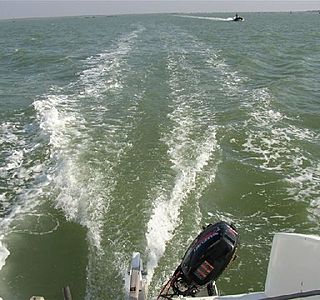
AH!AH! excellent, MDR + LOL
Se pose la question dans le ratio poids/SV, du déplacement réel du bateau. N'y a t-il pas eu, il y a quelques années, un essai dans une revue qui comparait poids catalogue et poids réel, avec des écarts non négligeable!!!!!!
sûr qu'il y a une différence! Même si aujourd'hui, les nouveaux acheteurs de catas n'y prête guère attention.
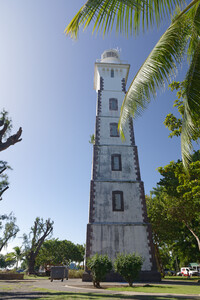
Phare du monde
Phare de la pointe de Vénus Tahiti
S'identifier
Pas encore de compte ? Monter à bord !
Forums plaisance et nautisme
Dans quel univers souhaitez vous ajouter votre Question ou votre Discussion ?
Échanges sur la voile et les voiliers : technique, nouveautés, vie à bord, navigation, tour du monde...
Échanges sur les bateaux à moteur : gros cubes, mécanique, technique, nouveautés, sortie en mer...
Espace convivial d'échanges, débat d'idées, polémiques, enguelades, autour de l'univers du nautisme
Forum des actualités du site, nouveautés, bugs, suggestions d'améliorations et évolutions...
- 0 Aucun produit au panier
Numéro en cours
- Tous les numéros
- Mes magazines
- Multicoques
- Fiches techniques
- Multihull of the Year
- Petites annonces
- Destinations
- Cartes postales
- Tous les magazines
- Abonnements
- Accessoires

Comparés à 2021, les multicoques de 9 mètres étaient bien plus nombreux sur les brochures il y a 40 ans, c’est un fait… Aujourd’hui, la plupart des gammes des grands constructeurs démarrent à 40 pieds – 34 pour Aventura, 37 pour Excess. L’annonce d’un catamaran de série de 30 pieds est donc un petit événement.
Partager cette page
Créez une alerte e-mail sur le thème Catamaran
Vous serez tenu informé des articles paraissant sur ce sujet

Publié le 30/04/2021
Par Emmanuel van Deth
Numéro : 206
Parution : avr. / mai 2021

Choisissez la formule qui vous convient !
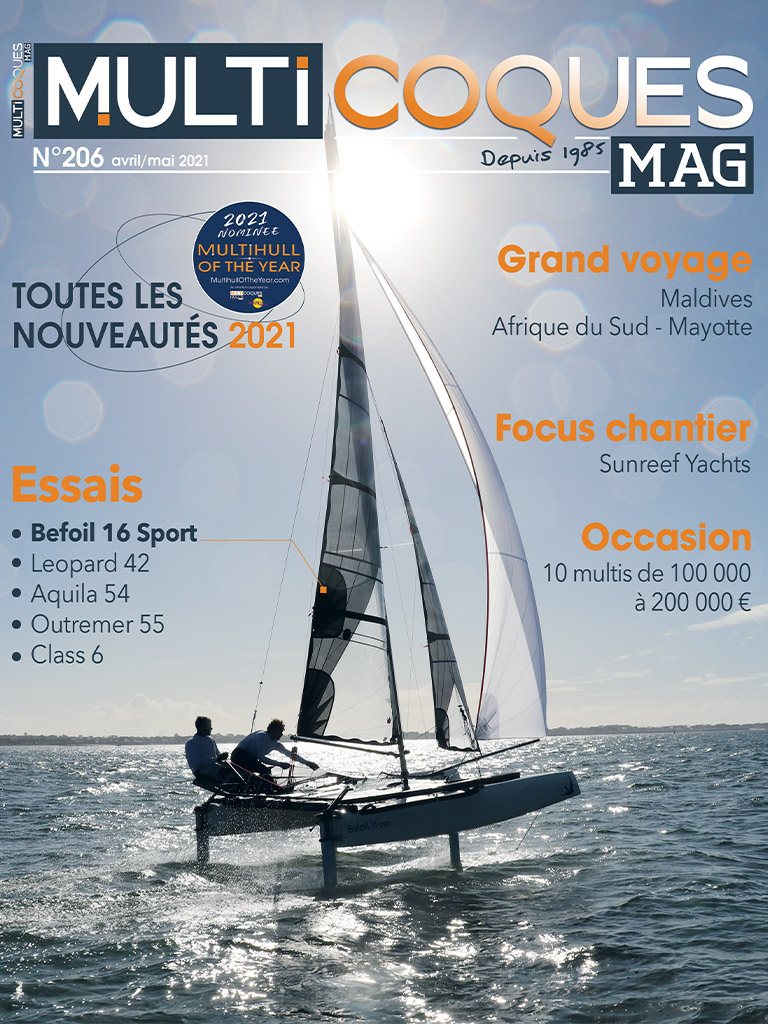
Parution : Avril / Mai 2021
- Tarif au numéro - numérique : 6.20€ Magazine numérique
- Tarif au numéro - papier : 6.90€ Magazine papier
- Accès aux archives Multicoques Mag Les archives
Le projet Palma 30 est le résultat de la collaboration Nicolas Purnu, associé de longue date de Marc Lombard pour la conception des multicoques, et de Jean-Noël Lebrun, spécialiste de la construction composite. Les coques et le pont du Palma 30 seront réalisés grâce à la technique de l’infusion en sandwich mousse PVC/verre/vinylester. Léger et bien toilé, ce nouveau modèle devrait être très vivant sous voiles. Sa particularité est d’être disponible en trois versions : Open avec cockpit central, Navigateur avec une cuisine, une sale d’eau et un grand arceau/capote et enfin Grand Tourisme avec un vrai rouf en dur et quatre couchages doubles (1,40 m de large à l’arrière, 1,20 m à l’avant). Il sera possible de faire évoluer son catamaran vers une version plus complète. La mise à l’eau du premier Palma 30 est annoncée en 2022 à La Rochelle.
Descriptif technique :
Constructeur : Windpearl Yachts Architecte : Nicolas Purnu Matériau : sandwich mousse PVC/verre/vinylester Longueur : 9,56 m Largeur : 5,35 m Tirant d’eau : 0,99 m Déplacement : 1 850 à 2 300 kg Surface de voile : 68 m2 Catégorie CE : A6 Motorisation : HB 10 à 15 CV ou 2 x IB 14 CV Prix : 89 000/115 000/125 000 € HT suivant version
www.windpearl.com
Articles les plus lus dans cette catégorie

Dream Odyssey

Neo 560 Cat

Aventura 45
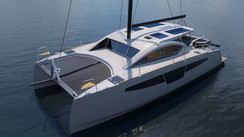
Les avis des lecteurs
Postez un avis
Il n'y a aucun commentaire.
MM n°226 - Sept / Oct 2024
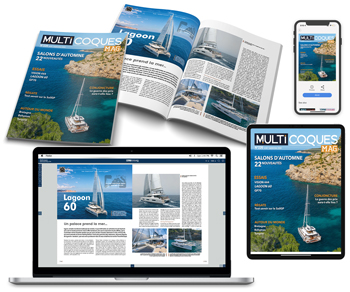
Articles sur le même thème

LibertyKite & Pinball Boat

Astrea 42 Smart Electric
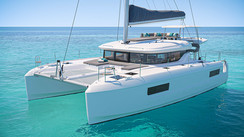
Abonnez-vous
Toute l'actualité à partir de 3€ / mois
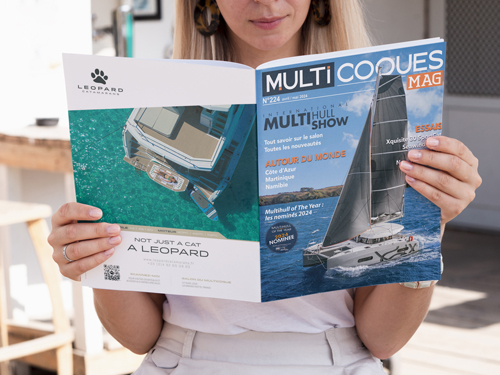
La vidéo du mois
Notre dernier hit YouTube!

Le Multihull of the Year
Les résultats 2024

Les petites annonces

Bosgraaf 15m Trimaran
Très bon état minicat 310.

Nautitech 48 0pen Disponible

NEEL TRIMARANS 52, livraison possible mai 2025
Vous avez ajouté " " à vos favoris., vous avez supprimé " " de vos favoris., pour ajouter cet article à vos favoris, veuillez vous connecter..

IMAGES
COMMENTS
Ed Horstman designed TRIMARAN and CATAMARAN plans are drawn for the first time builder. Plans are concise and clearly drawn so the builder can easily follow each building step. Designs are continuously updated with your input and new ideas. Plans include full size patterns to 63'.
As this is a folding trimaran, each beam (aka) is made up of 3 parts. Two curved ends and one straight part stretching over the main hull. As these beams take a high bending load, they are substantially built, using interior wood framework with an outer covering of plywood. Once built, this straight part lays on top of the fore-&-aft decks, so ...
The Astus 22.5's cockpit offers a safe space for 4 people. The 3.75 meter long trampolines complete the cockpit for additional crew members. A generous aft balcony (optional) can serve as a backrest for the helmsman. Some may want to add a small cushion. An aft balcony that invites the helmsman of the Astus 22.5 to settle in.
Design, construction, and material information about small trimarans: Design Criteria, Construction Methods, Comparisons of Designs, Speed, Stability, ... I am so impressed with the plans and the build. My daily vehicle is a Miata but I think you have designed the Miata of sailboats! Simple to look at but way more fun than most people will ever ...
In the hulls, the cabins offer volume and comfort without compromising performance thanks to a generous sail plan and superb centerboards. Builder: McConaghy Boats Architect: Ker Yacht Design Length: 60'1" (18.30 m) Beam: 28'2" (8.58 m) Draft: 4'7"/12'4" (1.40/3.75 m) Upwind sail area: 2,260 sq ft (210 m²) Cabins: 3/4
Below is a list of articles which have appeared in various publications regarding Rapido Trimarans. Sailboat Review, Rapido 40, A sailor's dream boat, by Mark Pillsbury, Cruising World magazine, 6 May 2024; Rapido host much anticipated launch of first Rapido 53XS, Sails magazine, 1 May 2024; Rapido 53XS - a peak speed of 24 knots during initial sea trials, by Emmanuel van Deth, Multihulls ...
Tryst 10 Trimaran Plans Download. About Woods Downloadable Plans. Click HERE to download Free Study Plans. The 10ft Tryst trimaran is a variation of the Duo dinghy. The main hull is a sailing Duo and it is fitted with two Vee shaped outriggers that bolt onto the Duo wings. The wings are then lashed to the main hull gunwales, as they are on Duo ...
The Scarab 18 is a very compact trailerable trimaran designed for sailing on protected water, easy to rig and sail (single handed if desired). It has a double berth and two quarter berths (under the cockpit seats) for two children. The centreboard is offset and housed in the starboard settee riser. The accommodation consists of a double berth ...
Ed Horstman designs started in 1960 with the TRI-STAR 40. TRI-STAR 40 was the first Trimaran to race in the Multihull Transpack race to Hawaii in 1966; taking second place. TORTUGA TOO, a TRI-STAR 39 similar to the design pictured above was the first Trimaran (Sept 1979) to sail from east to west around Cape Horn, experiencing 100 mph winds.
L20 Trimaran. A modern iteration of Philippine double outrigger canoe. Adapting to present-day construction method, the wooden facetted hull still has the silhouette of the Austronesian "Bangka". ... From Plans & kits. Trawler 28. ROBERTS 25. Didi Mount Gay 30. Mark V 39. View Plans & kits. From the Community. Classified. Classified ...
A brilliant toy for gliding across the water. This modern and ambitious trimaran has a reputation to uphold: it is the new variation of the mythical Corsair F27, one of the most popular cruising trimarans in the world. Highly anticipated in 2020, the 880's original launch schedule was hampered by Covid.
Notes. Folding trimaran. Beam folded: 2.5m / 8.17 ft. Available with carbon construction. Sport version includes taller carbon mast, laminate sails and carbon bowsprit. - SA = 62.9 sqm / 667 sqft. Displacement = unladen weight.
A 26' cruising trailerable trimaran in developed plywood. This 26' cruising trailerable trimaran is designed to be wide, stable and fast. ... While the many of the plans as shown below are hand drawn, the actual construction plans have been updated all along. Notice the recent ama design on the original prototype below. Even with the old amas ...
In the catamaran universe I think Richard Wood's designs come closest to what you are looking for. I'm not familiar with Ecopoxy but if environmental issues are important to you I'd highly recommend gpet foam in lieu of pvc or san foam; it's a bit less expensive almost as good physical properties and recyclable.
Lively 28 Cruising Trimaran. $ 170.00 - $ 185.00 (USD) 28'6″ (8.69m) cruising trimaran. For construction in plywood or as a mould for grp/frp. Main hull beam 7′. Draught 2′. Can use either inboard or outboard engines. and can be dismantled for either transportation or storage. With her 4 berths and 6'3″ headroom she is a proven ...
Ed Horstman designed TRIMARAN and CATAMARAN plans are drawn for the first time builder. Plans are concise and clearly drawn so the builder can easily follow each building step. ... Plans are leased to build ONE boat, NO time limit. Tri-Star designs are proven designs, sailing the seven seas since 1964. Free consultation is provided to the ...
Section E has a flat bottom, so there are 'just' a total of 4 knuckles to fit and fair. The flat-of-bottom can help to get the volume of buoyancy into the hull design and also be low down, and this shape will allow a boat to turn more easily than that of Section F that has a sharper keel on the centerline. The shape also still sits nicely on a ...
The Corsair 880 is designed to be completely safe and comfortable, for people of all skill levels. It features creature comforts such as air conditioning, heating, refrigerators and more. In true Corsair fashion, the generator and air conditioner are removable to reduce excess weight when racing, or reduce trailer weight when on the road. And ...
Angélique aka Angel (only by name) Philippe Briand has designed the Exception 52 Tri, several were built by Techni Yachts Pinta in the 1980's, here's one for sale, don't know if Philippe sells plans for it though, but if meant for single handed self build then such projects are gonna be to big I think.
Corsair 880. STANDARD SPECIFICATIONS AND EQUIPMENT. GENERAL: The Corsair 880 is the ultimate trailerable sports cruiser. Designed to enable families and groups of up to 5 to sleep onboard and cruise, the 880 is simple, light weight and nimble enough to be towed via a large family SUV or 4WD. EXTERIOR / LAMINATE:
Trimaran habitable et repliable de 6m, à moins de 5000 euros. Déjà évoqué ici ( www.hisse-et-oh.com [...]rimaran ) voici un nouveau post pour continuer à partager cette expérience d'un trimaran sur base de monocoque. A partir d'un Lanaverre 590 sur lequel le saumon et le lest ont été découpé, une structure en inox permet la fixation ...
avis sur trimaran Patagonie de Rougier Dans le même esprit l'architecte F. Rougier propose un plan gratuit de trimaran habitable de 7,5 m en strip planking/sandwich. Par contre je ne trouva rien sur ce bateau, existe-t-il un bateau construit à partir des plans?
Le projet Palma 30 est le résultat de la collaboration Nicolas Purnu, associé de longue date de Marc Lombard pour la conception des multicoques, et de Jean-Noël Lebrun, spécialiste de la construction composite. Les coques et le pont du Palma 30 seront réalisés grâce à la technique de l'infusion en sandwich mousse PVC/verre/vinylester.